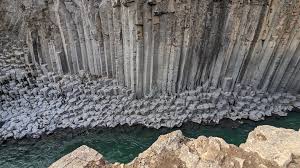Enhanced Rock Weathering:

Big business with tech giants, airlines and fast fashion firms lining up to buy carbon credits from enhanced rock weathering (ERW) projects.
- Enhanced Rock Weathering aims to speed up the natural capture and storage of carbon dioxide — a planet-warming greenhouse gas and also to turbocharge a natural geological process called weathering.
- Weathering is the breakdown of rocks by carbonic acid, which forms when carbon dioxide in the air or soil dissolves into water.
- Weathering occurs naturally when rain falls on rocks, and the process can lock away carbon dioxide from the air or soil as bicarbonate, and eventually limestone.
- ERW speeds the process up by using quick-weathering rocks like basalt that are ground finely to increase their surface area.
- Projects are happening in most parts of the world, including Europe, North America, Latin America and Asia.
- Its rates depend on variables including rock type and size, how wet and hot the climate is, soil type and land management.
- The added rock increases soil alkalinity, which can boost crop growth, soil nutrients and soil formation.
- Basalt is both naturally abundant and often available as a byproduct of quarrying, lowering the costs of the process.
- Experts note that even if the rock reacts with other acids in the soil, failing to lock away carbon dioxide at that stage, it can still have planetary benefits.
- That is because acids in the soil would otherwise eventually wash into rivers and the sea, where acidification leads to the release of carbon dioxide.
- It prevents carbon dioxide being released from the water into the atmosphere downstream.




